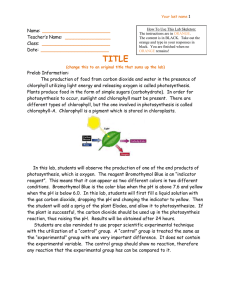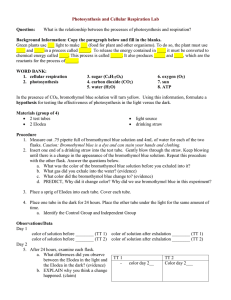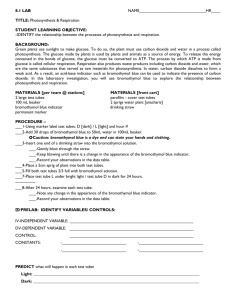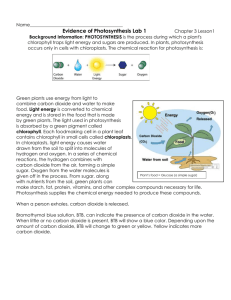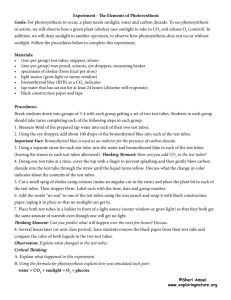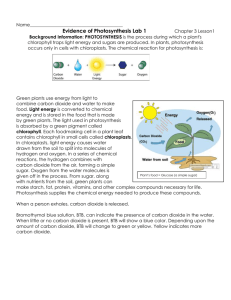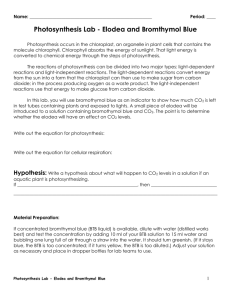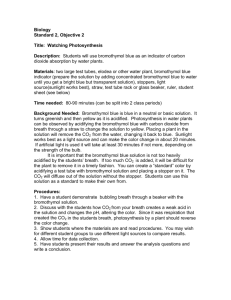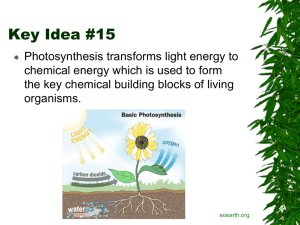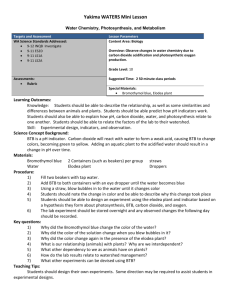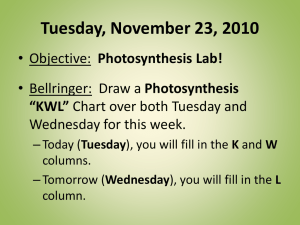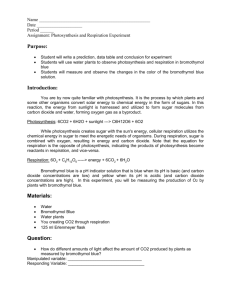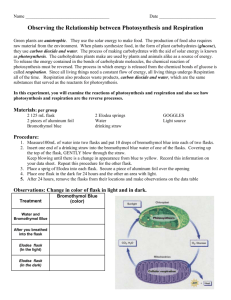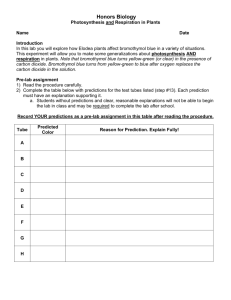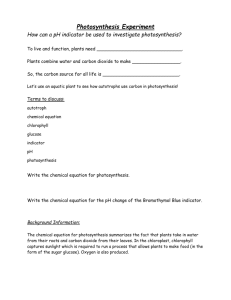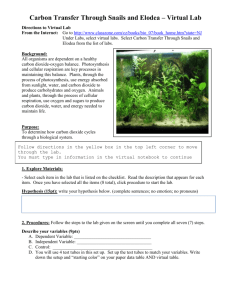Photosynthesis Lab | 21.8KB
advertisement
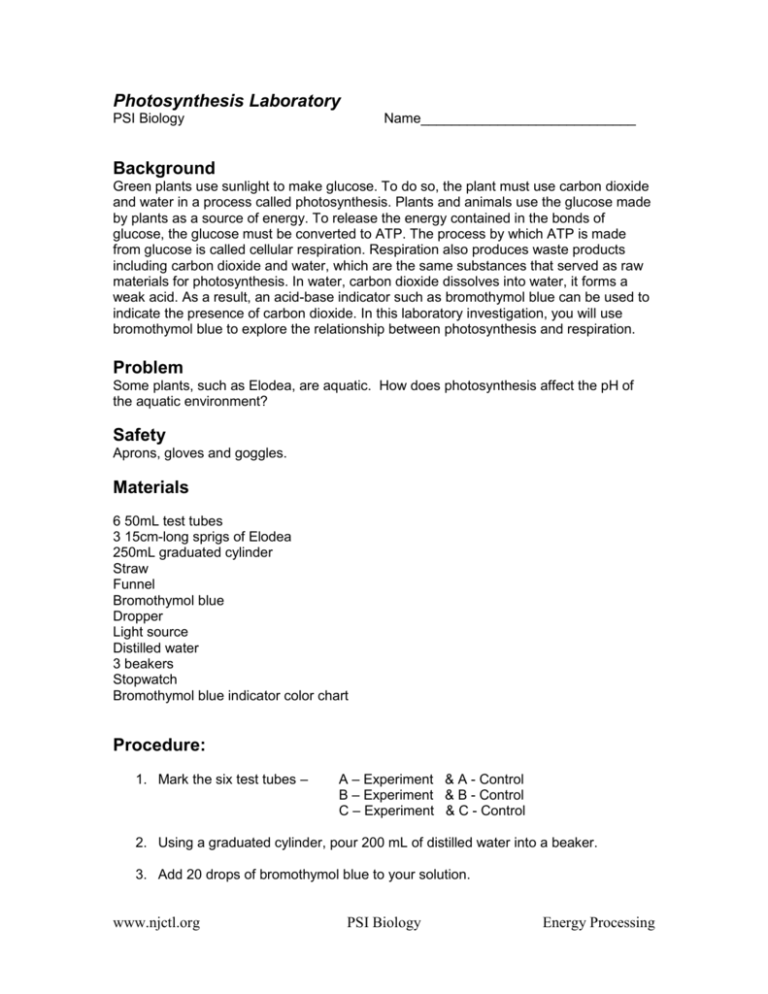
Photosynthesis Laboratory PSI Biology Name____________________________ Background Green plants use sunlight to make glucose. To do so, the plant must use carbon dioxide and water in a process called photosynthesis. Plants and animals use the glucose made by plants as a source of energy. To release the energy contained in the bonds of glucose, the glucose must be converted to ATP. The process by which ATP is made from glucose is called cellular respiration. Respiration also produces waste products including carbon dioxide and water, which are the same substances that served as raw materials for photosynthesis. In water, carbon dioxide dissolves into water, it forms a weak acid. As a result, an acid-base indicator such as bromothymol blue can be used to indicate the presence of carbon dioxide. In this laboratory investigation, you will use bromothymol blue to explore the relationship between photosynthesis and respiration. Problem Some plants, such as Elodea, are aquatic. How does photosynthesis affect the pH of the aquatic environment? Safety Aprons, gloves and goggles. Materials 6 50mL test tubes 3 15cm-long sprigs of Elodea 250mL graduated cylinder Straw Funnel Bromothymol blue Dropper Light source Distilled water 3 beakers Stopwatch Bromothymol blue indicator color chart Procedure: 1. Mark the six test tubes – A – Experiment & A - Control B – Experiment & B - Control C – Experiment & C - Control 2. Using a graduated cylinder, pour 200 mL of distilled water into a beaker. 3. Add 20 drops of bromothymol blue to your solution. www.njctl.org PSI Biology Energy Processing 4. Using the straw, blow into the solution. The CO2 in your breath will decrease the pH of the solution. Keep blowing until the solution turns yellow. 5. Pour 30 mL of your solution into each of the six test tubes using the funnel. 6. Obtain three 15-cm-long sprigs of freshly cut Elodea. Place one sprig of Elodea in each experiment labeled test tube. 7. Place test tubes A in darkness, test tubes B in room light, and test tubes C in front of a light bulb. 8. After 10, 20 and then 30 minutes, use the color chart to determine the approximate pH of the solution in each test tube. Record your results in the DATA TABLE as pH after experiment. DATA pH Start Exp Control 10 Min Exp Control 20 Min Exp Control 30 Min Exp Control Sample A Darkness Sample B Room light Sample C Bright Light Analysis: 1. Graph the pH change. 2. What is the relationship between change in pH and rate of photosynthesis? 3. According to your experiment, how is photosynthesis affected by light intensity? 4. Why did we use bromothymol blue in this experiment? 5. Explain the purpose of the control tubes. 6. What is photosynthesis and how do our results demonstrate the requirements necessary for this process to occur? www.njctl.org PSI Biology Energy Processing
